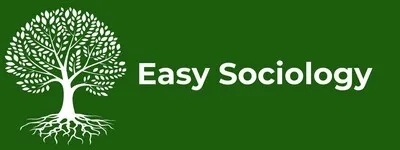Table of Contents
- Introduction
- Cohen’s Early Academic Setting
- Moral Panics: A Key Concept
- Folk Devils and Social Reaction
- Social Control and the Broader Implications
- Intersections with Deviance Theories
- A Brief Note on Denial
- Contemporary Relevance
- Legacy and Critiques
- Applying Cohen’s Framework
- Conclusion
Introduction
Stanley Cohen was a prominent figure in the field of sociology and criminology, best known for his pioneering concepts of moral panics and folk devils. Throughout his career, he explored how societies react to what they perceive as deviant behaviors, and the processes by which certain groups become stigmatized. Cohen’s work, which straddled sociology, social psychology, and criminal justice studies, helped reshape academic discussions around social control and cultural anxieties. His writings remain highly influential, consistently challenging readers to understand how power, public perception, and media narratives shape social interactions.
This article examines Cohen’s key contributions in a way that is accessible to undergraduate students. It begins with an overview of his background and intellectual context, then delves into his most famous concepts: moral panics and folk devils. Next, it explores how his theories broadened our understanding of social control, deviance, and collective reaction. Finally, it discusses the enduring significance of Cohen’s ideas in current sociological debates. Although his theories have stimulated wide-ranging discussions, here we focus on the core themes he developed—particularly those with enduring relevance to the study of societies, norms, and the sociology of deviance.
Cohen’s Early Academic Setting
Stanley Cohen emerged during a particularly fertile period in sociological and criminological research. Scholars in the mid-20th century began grappling with questions around social order, deviance, and the shaping of collective identities. Cohen’s formative intellectual environment included the work of Chicago School sociologists, who investigated crime and deviance in urban settings, and interactionist theorists, who highlighted the role of social interaction in defining deviant or criminal labels.
Unlike many of his contemporaries, Cohen emphasized how media discourse and public sentiment intersected to label certain behaviors and groups as threats. This approach reflected a broader social-turn in sociology, wherein scholars increasingly recognized that deviance is not a fixed entity but a product of cultural narratives, moral judgments, and political agendas. By rooting his analysis in real-world phenomena, Cohen offered concrete examples and engaged directly with how society constructs danger and wrongdoing. His early exposure to these emerging threads in sociology would lay the groundwork for his major theoretical contributions.
Moral Panics: A Key Concept
Defining Moral Panic
One of the most enduring contributions by Stanley Cohen is the notion of the “moral panic.” According to Cohen, a moral panic arises when a situation, an individual, or a group emerges as a perceived threat to the social order, norms, and values of a community. In these moments, public anxiety intensifies, and social agents—from media outlets to politicians—treat the perceived threat as if it poses serious, sometimes existential, harm. Cohen’s perspective highlights how these events are often out of proportion to the actual threat posed.
A moral panic may begin with a relatively small-scale incident. Media reporting exaggerates or sensationalizes the story, generating anxiety among a wider population. Public sentiment starts to shift rapidly; the group or individuals involved are singled out for blame. This is often followed by demands for more stringent social control measures—such as new legislation, heavier policing, or broader forms of surveillance—to quell the supposed crisis.
The Role of the Media
Media outlets play a crucial role in the escalation of moral panics. Cohen showed that sensational headlines and emotive language transform relatively small or ambiguous events into matters of urgent public concern. By elevating the moral dimension—i.e., by labeling the behaviors as fundamentally evil or dangerous—the media fosters widespread agreement that something must be done. Journalists and opinion makers frequently rely on emotionally charged framing, which influences how policymakers, law enforcement officials, and the general public respond.
Although moral panics occasionally uncover legitimate social issues, Cohen argued that the ensuing fervor can amplify the problem through disproportionate policies and moral condemnation. He noted that these collective reactions often ignore structural factors and can overshadow more rational, nuanced debates about causes or solutions. Consequently, moral panics risk perpetuating stereotypes, especially of marginalized communities, and can pave the way for policies that fail to address root causes.
Exaggeration and Distortion
A striking element in moral panics is the pattern of exaggeration. Public discourse distorts the severity of the perceived threat, while negative characteristics are applied indiscriminately to those labeled as deviant. The moral panic framework shows how intense emotional reactions, fueled by media campaigns, can overwhelm measured analysis. It also underscores that labeling deviance is a social process, one shaped not just by the deeds of the accused but also by society’s fear-driven narratives.
Folk Devils and Social Reaction
Identifying the “Other”
Cohen introduced the concept of “folk devils” to describe groups or individuals who become symbols of moral panics. Folk devils are cast as dangerous outsiders whose actions threaten the social fabric. In labeling them as fundamentally deviant or immoral, society positions itself in stark opposition to these individuals, viewing them as the cause of moral decay. This dichotomous viewpoint fosters social hostility and encourages punitive responses.
By labeling certain groups or behaviors as deviant, communities reinforce their own moral boundaries. Policymakers and media outlets alike can manipulate these boundaries to gain public support, especially during times of cultural transition or uncertainty. For the marginalized individuals identified as folk devils, however, this can mean facing disproportional blame, stigmatization, and enhanced surveillance.
Amplification of Deviance
Cohen did not view folk devils as mere scapegoats; rather, their portrayal is part of a larger reaction to social change. The media depictions, community outcry, and government interventions combine to amplify deviance. The targeted group, already singled out, faces increased scrutiny. This amplifies behaviors that may already have been considered problematic, exacerbating tensions and perpetuating cycles of confrontation.
In some cases, the group’s negative portrayal can lead to a self-fulfilling prophecy. When public institutions and policies escalate their response, they may alienate or further marginalize individuals, reinforcing deviant or antisocial behaviors. Over time, the negative label can become an entrenched identity, leading to an ongoing cycle of suspicion, social alienation, and social control efforts. Cohen’s framework remains relevant in many contemporary discussions about marginalized groups and how media narratives can distort public perceptions.
Social Control and the Broader Implications
Systems of Monitoring
Central to Cohen’s work is the exploration of how moral panics shape social control. He argued that panic-fueled demands for tougher measures create an environment where monitoring and policing expand. Rather than solving underlying social issues, these heightened forms of control often entrench fear and suspicion. Law enforcement agencies, policymakers, and even educational institutions can become complicit in processes that stigmatize certain populations.
This shift can have long-lasting ramifications. Even after a moral panic subsides, the new policies and cultural attitudes may remain, deeply embedded within social structures. These institutional developments—such as expanded surveillance capacities or new policing powers—reflect the “stickiness” of moral panics, where the normative boundaries they construct linger long after the immediate panic has faded.
The Politics of Moral Entrepreneurship
A crucial insight from Cohen’s work is that moral panics do not arise spontaneously. Certain individuals or groups, known as “moral entrepreneurs,” actively promote the narrative that a threat is imminent. These moral entrepreneurs can be politicians seeking electoral advantage, media outlets aiming to boost ratings, or advocacy groups leveraging public fear. They position themselves as protectors of traditional values or defenders of the public good, thereby gaining legitimacy and influence.
By focusing collective anxiety on a specific deviance, moral entrepreneurs can advance their political goals. They may push through stricter legislation, shift budgetary priorities, or reinforce public sentiment that certain social groups are disposable. Cohen thus showed that moral panics are not random phenomena but calculated, often orchestrated efforts that serve particular interests in the broader social landscape.








